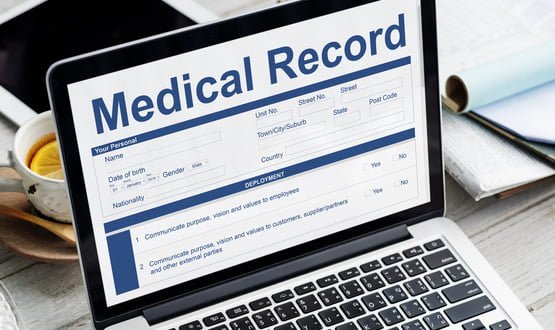Expert view: David Akka
- 4 August 2010
 |
|
David Akka |
On 28 August 2005, Hurricane Katrina hit the southern coast of the US with devastating effect. More than 1,800 people lost their lives, and the total destruction of homes and property was estimated to top out at more than $81 billion.
In the resulting cleanup operation, the Health Level 7 (HL7) capabilities of the Houston-Harris County Immunization Registry enabled a total of 38,360 vaccination records to be searched in rapid time. The net result was 13,377 matches that saved more than $1.5m in needless vaccinations.
In addition to becoming a de facto standard in Western digital healthcare systems, HL7 is spreading through the developing world. However, HL7 is no longer just about organising national – or even international – healthcare data.
The standard is gaining credibility as a tool in managing major disaster relief efforts, and in supporting public health agencies.
In the face of pandemic threats that, in the past five years alone have included avian flu, swine flu, SARS and other disease outbreaks, integrated health data is now being recognised as increasingly critical to providing both protection and health to the world populations.
Wide but fragmented adoption
This very much chimes with the overall purpose of the HL7 organisation and the HL7 protocol, which was originally designed to break down the barriers between diverse IT systems and to use a single communication protocol that supports end-to-end communication between those systems.
The HL7 standards body itself has broadened over time. A meeting of the HL7 Board of Directors – the Affiliates’ Council (now renamed the “International Council” as part of a “broader strategy to highlight the global character and impact of HL7”) – recently welcomed HL7-Argentina as a member.
It heard that this body: “Currently has three individual and 30 organizational members. We are all collaborating: HL7 Colombia, HL7 Chile, HL7 Mexico, HL7 Uruguay, and HL7 Brazil.” In 2009, HL7 India saw more than 50 members swell its ranks.
This explosive growth, though, has led to a somewhat fragmented adoption pattern. In some ways, this comes as little surprise – the standard has been around since Version 2.x was released in 1987, and has seen many hundreds of revisions since then. HL7 v3 was released in 2005, and has also seen a slew of revisions, which are still ongoing today.
This fragmented, legacy dictated deployment model means that even across close neighbours such as the UK and Europe standards are not yet entirely consistent. Every time a vendor updates, changes or modernises their healthcare application, they also have to update and maintain the new HL7 layer.
In the EU, regional variations in National Electronic Patient Records standards (such as the AORTA system in the Netherlands) mean that complete interoperability is never guaranteed.
For example, Heidelberg University Hospital is building HL7 interfaces for admission, discharge and transfer messaging and for medical document management. But to add images to the patient health records, the university has been forced to combine HL7 and DICOM messaging.
The resulting complex data flow requires two different kinds of HL7 interfaces in order to get the patient identification and other information in addition to the accession number of the case.
Issues for integration engines
For ‘standardisation’ such as HL7 to work successfully, everybody must be on board. The problem is, many healthcare suppliers are still having issues with making their applications HL7 compatible in the first place, and the fact that there are a number of HL7 standards out there serves to exacerbate the problem further.
Additionally, as the EU is now working hard to carve out a standardised healthcare format, HL7 is going to play an even bigger role on the continent in future. The challenge for healthcare suppliers is to transport their current health data to the HL7 protocol and ensure consistency.
In such a time-critical situation, often limited to weeks or a few months, the use of an integration engine can help to speed up the move to the HL7 standard – including those companies looking to migrate from HL7 v2.x to HL7 v3.
Such platforms enable healthcare providers to become more rapidly connected, more productive, more flexible and more efficient. Such solutions are essential in order to meet the rising challenges and changes in healthcare organisation and provision.
From the days when such integrations needed to be hard coded by teams of developers, the IT environment has evolved.
Today, specific industry-focused integration platforms contain pre-programmed functions and capabilities specific to transforming standard XML files to the HL7 protocol and also HL7 v2.x messages to HL7 v3 (which is based on the same XML messaging structure).
When implementing common integration scenarios, extensive programming is usually required to build the interfaces and custom workflows between the applications in the enterprise. This process requires skilled programmers, using Java, C#, TCL, Python or other programming languages.
Metadata integration platforms are based upon a ‘business centric’ approach rather than the use of specific programming languages.
Using pre-compiled and pre-configured business information and functionality, or ‘engines’, a metadata approach gets around the technical complexity of the integration process, allowing developers to focus instead on the information linkages and specific healthcare integration scenarios required.
A metadata approach to integration also has the advantage of using a single skill set for integrating between diverse healthcare applications, protocols such as HL7, and technology environments. This reduces integration implementation time, enabling healthcare providers to effectively test and more quickly deploy their integration.
Getting everybody on board
Whatever the means, one thing remains certain: healthcare providers must become more rapidly connected, more productive, more flexible and more efficient. HL7 offers many of these benefits, and will become increasingly vital in digital healthcare provision.
However, without timely integration of new HL7 versions by vendors, as well as renewed dissemination efforts from the standards body, achievement of these efficiency goals will remain elusive.
Author: David Akka, is managing director, UK, Eire, Nordics, Magic Software Enterprises. He has been with Magic Software since 1998 and is considered one of the organisation’s foremost authorities on cloud computing and SOA methodologies. He holds an MSc in Computer Science and a Masters in Business Administration specialising in sales and marketing, from Manchester Business School.




